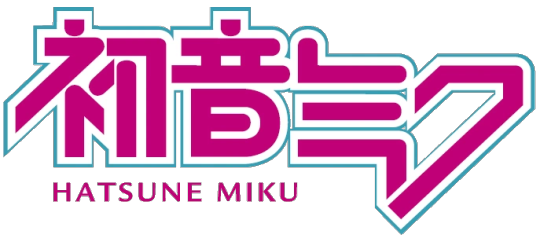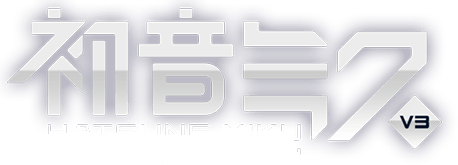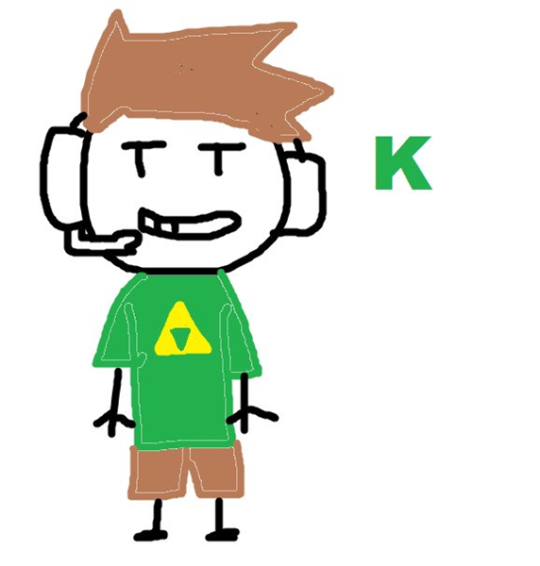#Piapro Studio NT
Explore tagged Tumblr posts
Text
Crypton: “We have a BIG voicebank announcement to make for Miku’s birthday in August!”
Crypton in August: “We made Piapro Studio NT slightly faster. That’s it, that’s all we did. We didn’t even like, improve the sound quality or anything. :)”
19 notes
·
View notes
Text

NT Casual ˚。⋆୨୧
#vocaloid#hatsune miku#hatsune miku nt#piapro studio#made this for miku day but forgot to post here!!!
223 notes
·
View notes
Text
My rendition of Sakura Miku NT
I might seem obsessed with Miku's NT design, but I am.
This was my last Easy Paint Tool SAI drawing before I transitioned into Krita. So really old, but still cute. Also, background.

#sakura miku#miku nt#hatsune miku#hatsune miku nt#cryptonloids#piapro studio#miku#vocaloid#derivative#pink#long hair#sakura#cherry blossom#fanart#fanmade#art#artists on tumblr#illustration#my art
25 notes
·
View notes
Text
Crypton Future Media Announces the Piapro Characters Super Pack and Hatsune Miku V6 AI!
In high anticipation and excitement, Crypton Future Media has revealed their new products for their new releases this year! 3 major products have been made including a major update for Hatsune Miku NT, a Super Pack containing remastered V4 banks for all 6 Piapro Characters, and the biggest the announcement this year, Hatsune Miku’s return to VOCALOID with Hatsune Miku V6 AI. Piapro Characters…
26 notes
·
View notes
Text
youtube
Today's featured song is: "Selfish Princess" by Fujiwo feat. Hatsune Miku! (cw: violence/murder, blood, cannibalism)
#vocaloid#vocaloid songs#vocaloid song of the day#song of the day#selfish princess#wagamama hime#fujiwo#fujiwo vocaloid#reach mix#kashiwa#kashiwa animation#hatsune miku#hatsune miku nt#piapro studio#cw violence#cw murder#cw blood#cw cannibalism#Youtube
6 notes
·
View notes
Text
This is not anything like my usual shit posting (which only really consists of reblogs lets be real), but i kind of wanted to put this one out there.
Although i really do NOT like Hatsune Miku NT whatsoever (regardless of whether its Ver. 1 or Ver. 2), once the 39 day trial for her dropped this morning, i thought i'd try her out just for funsies and honestly??? as much as i cannot stand how nasally she STILL is, she's actually really fun to use, and i really wasn't expecting that. like, i'm a Miku V2 and Miku V4X truther, and i was ready to call this 100% dog water, but she's sort of grown on me the more i've used her
icl though i love this version of piapro studio. i really miss having all the parameters and such on the left panel, but NT2 is groovy for what it actually does. we stan. crypton cooked with this version of piapro studio, but not so much with the voice bank i fear :((((
i may finish this cover and release it, but idk if i can be bothered with mixing because mixing is DIFFICULT
5 notes
·
View notes
Text
IM DESTROYING BURNOUT WITH A BAT!!!
youtube
#annt's covers#vocaloid#synthv#piapro studio#hatsune miku#miku nt#mai synthv#mai#tsumiki#cerca/esoterica#Youtube
2 notes
·
View notes
Note
I'm going to cry happy tears they drew my request EEEEEEEEEEEEE
hrmm idk if I asked this before ahh
BUT PLEASE PLEASE A MIKU BUT IN HER NT/PIAPRO DESIGN BECAUSE LITERALLY NO. ONE. DRAWS HER THAT WAY. PLEASE PLE

i’ve drawn nt miku a few times but you’re right, the design is super underrated,,
1K notes
·
View notes
Note
Is the word "Vocaloid" ever mentioned in the game or is "Virtual Singer" a way of replacing it? Is the first one copyrighted and they can't use it for some reason?
the game is a techdemo for crypton's NT voicebanks, which are for use with their own piapro studio instead of yamaha's vocaloid engine. that's why the word vocaloid is never used (and why the tuning on comms/covers sounds. not great a lot of the time)
50 notes
·
View notes
Text
My favorite voicebank for every vocal synthesizer that I know about LET'S GO!
Lalavoice: Obaasan
Vocaloid 1: Miriam
Cantor: TERA
Cantor 2: Nikki
Vocaloid 2: Hatsune Miku Append Solid
Vocal Writer: Sarah
UTAU: Gekiyaku
Cadencii: Defoko
Sinsy: Yoko
Salt Case/Sugar Cape: Hirosenuko
Vocaloid 3: SeeU
Voiceroid: Iori Yuzuru
Vocaloid AI: Hibari Misora
Maidloid: Acme Iku
CeVIO Creative Studio: Kinzaki Koharu
Vocaloid 4: Sachiko
Alter Ego: Alys
NaioNaio: DongFang ZhiZi
Vocaloid 5: Meika Mikoto
Paint Voice: Default Vocal
Synthesizer V/SynthV R1: Cang Qiong
Sharpkey: SuoYun Rila
Sharpkey Galaxy: Akane Inari
DeepVocal: MeiYan May (Please update her!)
MUTA: Yan Xi
Synthesizer V Studio Standard/SynthV R2: Kyomachi Seika Standard
Synthesizer V Studio AI/SynthV R2 AI: Haruno Sora
CeVIO Pro/VoiSona: Yamada Kanon
VoiSona Talk: Tsurumaki Maki Japanaese and English
CeVIO AI: POPY
Vocaloid 6: Kasukabe Tsumugi
NEUTRINO: Runo
Piapro NT: Hatsune Miku (Was there any other option LOL?)
OpenUtau: KYE
Voicepeak: Minase Kou
VoiceVox: Kurone Takehiro/Genbu
ACE Studio (The original iPhone app from 2021): Xiao Ye
ACE Studio (Modern Computer Version): Li Yuan "Lioy"
Maghni AI (Upcoming): Imani and Shirakami Kotarou (I know that It's two but it's my post and I make the rules)
#vocal synth#synthesizer v#synthv#vocaloid#utau#sinsy#voicevox#ace studio#maghni ai#cantor#cantor 2#saltcase#sugarcape#cadencii#neutrino#voicepeak#paintvoice#lalavoice#alter ego#niaoniao#sharpkey#sharpkey galaxy#deepvocal#deep vocal#muta#cevio#cevio creative studio#voisona#cevio ai#cevio pro
15 notes
·
View notes
Text
Miku had a slightly different design too?? Like, in the dream, both characters were announced with promotional mugshots looking directly at the screen. She was still drawn by iXima, or at least in their style.
She still looked like her NT design, though her face looked a tinsy bit more mature, her pigtails were slightly messier, and a little more natural-looking than the perfectly silky look of her NT design. And what we could see of her top was colored more like the gray of her V2 design, rather than the brighter whites of iXima’s designs.
I dreamt last night that Miku received a talk VB on CeVIO AI, and it honestly sounded pretty cool.
Also, there was another random character also having a talk vb released on the same day. She looked like a VTuber, and she had short black hair, and a cyberpunk yellow-orange idol outfit, and accessories with pink highlights. She looked a little bit like YanXi from MUTA, but this was definitely a separate character.
She had a lot of cross-promotion with Miku, since they were releasing on the same day & it was actually pretty neat,
10 notes
·
View notes
Text
OKAY, so computer update.
I just got it back. (First time I got hardware sent back after sending it in I'll be damned.) At the moment everything seems to be in order but I just don't know how stable it actually is right now. Like, right now it's reading both SSD drives as separate drives (instead of only one of them, or the shitty way it was set up before as one 4TB drive) but considering how before it did read them as two drives, after turning it off and on again, it would then only read one. I did turn it off and on again now and it's still reading both of them but if that's gonna last I don't know.
If it's still working tomorrow I think I'll start reinstalling some of my VOCALOIDs, but as a trial. I might install CeVIO, VoiSona, Piapro Studio NT, and FL Studio since those licenses either carryover easily (CeVIO can easily move authorization every 24 hours and the rest are tied to accounts. Would be better if there was no DRM at all though.) but aside from those last four, I'm not going to activate anyone to be safe.
My ask box will still remain closed for the time being but I can actually talk to people now. I'm not going to open it untill I'm sure my computer's in working order.
7 notes
·
View notes
Note
(ties Testy up) HI TEST TUBEEEE!!! IM GONNA EDUCATE YOU ABOUT VOCALOIDS!!
Hatsune Miku (初音ミク), codenamed CV01, was the first Japanese VOCALOID to be both developed and distributed by Crypton Future Media, Inc.. She was initially released in August 2007 for the VOCALOID2 engine and was the first member of the Character Vocal Series. She was the seventh VOCALOID overall, as well as the second VOCALOID2 vocal released to be released for the engine. Her voice is provided by the Japanese voice actress Saki Fujita (藤田咲, Fujita Saki).
There have since been numerous installments, such as additional voice libraries dubbed 'Append', as well as an upgrade for the VOCALOID3 engine, which contained an English vocal release. She received a VOCALOID4 update to her Japanese and English voicebanks in August 2016, as well as a Mandarin Chinese voicebank in September 2017.
On August 31, 2019, Miku received her first voicebank outside of VOCALOID, that being Piapro Studio with her NT release. While Crypton is focusing on their own program, they are still in collaboration with YAMAHA and will continue to sell VOCALOID products in parallel to the Piapro Studio editions.
On August 30 2024, a refined and retuned edition of Hatsune Miku's original VOCALOID4 (V4X) voicebank, titled Hatsune Miku SP, was released for the PIAPRO CHARACTERS SUPER PACK; a set of Japanese voicebanks developed for the Piapro Studio for V4X and VOCALOID4 engines. This release was noted to improve Miku's overall balance of tone and pronunciation. On August 1, 2024, it was also announced that Hatsune Miku would be receiving an update to the VOCALOID6 engine, dubbed 'Hatsune Miku V6 AI', in response to strong requests from creators, marking her return to VOCALOID. It is expected to release sometime in 2024.
🧪- FASCINATING!
CAN I MAKE MY OWN VOCALOID!?
#ii test tube#inanimate insanity#ii ask blog#ask blog#ii the light seekers#you’ve made a monster#she’s gonna now listen to vocaloid with fan and they’re gonna make there own#we interrupt your daily chaos with Testtube sillies
8 notes
·
View notes
Text
Hatsune Miku NT2 Early Access Begins! + SynthesizerV Riku & Felicia Release! + Jasper Revealed to be on VoiSona
After much wait, users were finally able to start experimenting with Hatsune Miku NT (Version 2) this week! Cover of UtsuP’s “OGRE” with Hatsune Miku NT2 Many people have already been testing her out and experimenting with the new features. Since the new update is still in development, Crypton Future Media has also provided a survey link for users with Early Access to give feedback. We…
#beta#Crypton#Crypton Future Media#Dreamtonics#Early Access#Felicia#GEMVOX#GONZO#Hatsune Miku#Jasper#Piapro#Piapro Characters#Piapro NT#Piapro NT2#Piapro Studio#Riku#Studio ENTRE#SynthesizerV#SynthV#VoiSona
6 notes
·
View notes
Text
HAPPY BIRTHDAY TO HATSUNE MIKU(VOCALOID 2) [31 AUG] !!!!!!!!!!!!

(v2)
AAAAAAAAAAAAAAAAAAAAAAAAAAAAAAAAAAAAAAAAAAAAAAAAAAAAAAAAAAAAAAAAAAAAAAAAAAAAAAAAAAAAAAAAAAAAAAA
Hatsune Miku is a japanese synth developed by Crypton Future Media and released in 2007. shes voiced by Fujita Saki. her v2 is illustrated by KEI, v2 append by Asai Masaki, v3 english by Zain, rest of v3 by iXima, v4 chinese by Mamenomoto with support from iXima, rest of v4 by iXima, and NT by iXima. miku is the most popular vocaloid, and vocal synth in general. she is part of the cfm Character Vocal Series. miku is 16yo and 158cm tall. her name means "the first sound from the future" as "hatsu" means first, "ne" means sound, and "miku" shares a spelling with the japanese word for future. her character item is a spring onion, though this is often misinterpreted to be a leak, and so she is often depicted with a leak instead. she is an "android diva" from a world in the near future in which songs are lost. her vbs include: hatsune miku original- v2- 31 aug 2007 hatsune miku append sweet, dark, soft, light, vivid, solid- v2- 30 apr 2010 hatsune miku v3 original, sweet, dark, soft, solid- v3, vocaloid neo, piapro studio- 26 sep 2013 hatsune miku v3 light, vivid- v3, piapro studio- 26 sep 2013 hatsune miku v3 english- v3, vocaloid neo, piapro studio- 31 aug 2013 hatsune miku v4x original, sweet, dark, soft, solid, english- v4, piapro studio for v4x/ piapro studio 2- 31 aug 2016 hatsune miku v4 chinese- v4, piapro studio standalone- 6 sep 2017 hatsune miku nt original- piapro studio nt- 27 nov 2020 shes also available on the moblie vocaloid editor, vocaloid keyboard, and on the pocket miku piano. she was supposed to have a english v2 but that turned into luka, and an experimental falsetto bank which was never released.
also she is THE Hatsune Miku, idk what more there is to say !!! i originally was going to write more but i kept hitting the character limit on everything, so ill just share that for her 10th anniversary over 40k usd were crowdfunded to create a digital shrine for miku in Samseong Station, because this has just been on my mind recently, and i just love miku



logos

append

v3 english

v3 standard

v3 light and vivid

v4x

v4 chinese

nt

concept art aka "beta miku"
#miku#hatsune miku#miku hatsune#vocaloid#vocaloid 2#vocaloid 3#vocaloid 4#vocaloid neo#piapro studio#piapro#cfm#crypton future media#cryptonloids#miku 16th#bday#vocal synth#vocal synthesizers#vocal synths#vocalsynth#vocalsynths#august#aug 31#i love hatsune miku#i got told off in school for having painted nails#but they were miku coloured for this special day#so its ok#i burst into tears like twice while writing this#i wanted to write so much more but id be at it till tomorrow#and i write all my captions in discord first#which has a very low character limit
82 notes
·
View notes
Text
Introduction - Vocal Synth Terminology - Part 1
This post will be split into multiple parts due to Tumblr's character limit.
If you are new to the Vocal Synth community, you may encounter some words and phrases you don’t understand. For instance, someone may tell you about Rin and Len’s appends, and you may confuse that term for the difficulty in Project Sekai! Colorful Stage! Or may have heard someone discussing USTs, but can not find its definition anywhere nor figure out what the hell they are talking about.
Well, I made a dictionary of sorts to help newbie fans get used to Vocal Synth jargon. The keyword is “Vocal Synth” as these apply to other software as well. These definitions have a greater focus on the programs themselves than the characters.
Credits to Vocaloid Wiki and Minnemi on YouTube for some of these definitions.
Vocal Synthesizer: A digital instrument that creates tracks like any other DAW, but instead of piano notes, guitar strums, or drum beats, you compose vocals! Also known as “vocal synths”. Examples of vocal synthesizers include VOCALOID, UTAU, SynthesizerV, CeVIO, and Piapro Studio.
Voicebank: A collection of recordings of the sounds that make up a language. These sounds are typically vowels and constants, but depending on the voice bank, you may also get breath notes and pronunciation effects. Or, in simpler terms, the singers that are used in vocal synths! There are ton of voicebanks in the vocal synth community, with some of the popular ones being Hatsune Miku (VOCALOID + Piapro Studio), Kagamine Rin and Len (VOCALOID + Piapro Studio), Megurine Luka (VOCALOID + Piapro Studio), Kasane Teto (UTAU + SynthesizerV), Megpoid Gumi (VOCALOID + SynthesizerV + A.I. VOICE, FineSpeech Ver3), flower (VOCALOID + Gynoid Talk + CeVIO), IA (VOCALOID + CeVIO), and KAFU (CeVIO + SynthesizerV)! Individual vocal synth characters can also have different versions of their voice, such as Yuzuki Yukari’s Onn (soft) and Lin (power) voicebanks!
Voice Provider: The person whose voice that a voicebank is created. Voice providers record samples of their voice (specifically vowels and constants) at a certain key (for instance A3), which are turned into a voicebank with the company’s black magic (I’m kidding, I don’t know how they process and put the vocals together). For instance, PIKO is Utatane Piko’s voice provider, Satoshi Fukase is Fukase’s voice provider, and Naoto Fuga (shown below) is KAITO’s voice provider!

Crypton Future Media: The brains behind some of the most popular VOCALOIDs, which are Hatsune Miku, Kagamine Rin, Kagamine Len, Megurine Luka, KAITO, and MEIKO. Aside from voicebanks, they created games, concerts, merchandise, and much more relating to these beloved VOCALOIDS! Cryptonloids are… VOCALOIDS created by Crypton. Soon, Crypton departed from Yamaha and made its own vocal synthesizer in affiliation with another company called Piapro named Piapro Studio. There are two versions of this software; Piapro Studio NT and Piapro Studio V4x.
UTAU: A vocal synthesizer that is considered the “sister” software to VOCALOID. Unlike VOCALOID, this software is 100% free and you can create your own voicebank. There are thousands of UTAUloids at this point in time, giving you a huge selection of different ranges and strengths. Popular UTAUloids include Utatane “Defoko” Uta, Kasane Teto, Namine Ritsu, Momo Momone, Yowane Ruko, Sukone Tei, Rook, Gahata Meiji (shown below), Yamane Renri, Matsudappoiyo, Keine Ron, Kohaku Merry, Gekiyaku, Kazehiki, Adachi Rei, Ooka Mika, and so many others! There is also an open-source version of UTAU called Open UTAU, which is much easier to install and use (it has a dark mode!). Vipperloids are the classic UTAUloids that share surnames ending with “-ne” and their VOCALOIDish designs. These include Utatane “Defoko” Uta, Kasane Teto, Namine Ritsu, Momo Momone, Yowane Ruko, Sukone Tei, and many others.

SynthesizerV Studio: Also known as SynthV, this is a vocal synthesizer made by Dreamtonics that is well-known for its AI voicebanks. For a software that is smaller than VOCALOID, they are extremely advanced with realistic-sounding voicebanks, piano-roll tuning, rap vocals, and so many other features. It’s also much cheaper (thank you, Yamaha money sharks). In addition, Dreamtonics has two free versions; SynthesizerV Studio R1, and SynthesizerV Studio Basic R2. Popular SynthV voicebanks include Eleanor Forte, Kaorou Rikka, GENBU, Tsurumaki Maki, SAKI, SOLARIA, KEVIN (fan design by ivylare shown below), Stardust, ROSE, POPPY, and Kasane Teto Ai!

CeVIO Project: A collection of voice synthesizers created in collaboration with five different companies including Techno Speech and Frontier Works. Not only do they make vocal synthesizers, but their softwares have speech interfaces as well. As of now, their most popular program is CeVIO AI, a next-generation vocal synthesizer that uses AI technology to create powerful vocals as seen in SynthesizerV. Popular voicebanks include Chis-A (shown below), KAFU, Sato Sasara, IA AI, ONE, Yuzuki Yukari Rei, CiFlower, POPPY, ROSE, and many others.

Tuning: Essentially how you want a song or cover to sound. By editing the parameters of the individual notes and that of the voicebank itself (including the pitch, volume, strength, sharpness, and breaths), you can obtain an entirely different result of how the singer sings the encoded notes through different methods. This blog is dedicated to teaching people how to tune, so I’ll show a variety of tuning styles in the software.
V_: The VOCALOID software edition. As of now, there are six editions of the software, which are VOCALOID, VOCALOID2, VOCALOID3, VOCALOID4, VOCALOID5, and VOCALOID6. A lot of VOCALOID voicebanks would be named after the edition they were designed for, such as Gackpoid V4.
VSQ/VSQx/VPR/UST/SVP: The different vocal file formats through which the note, lyric, and tuning data are saved in different vocal synthesizers. These files are not exactly specific to a single editor as they can be converted to the appropriate formats:
VSQ: VOCALOID2 and VOCALOID3
VSQx: VOCALOID4
VPR: VOCALOID5 and VOCALOID6
UST: UTAU and OPENUTAU
SVP: SynthesizerV Studio
Phonemes: In linguistics and developmental psychology, phenomes are the smallest sounds of speech that distinguish one word from another. Similarly, in vocal synths, these are the building blocks of the individual lyrics that are read by the voicebank. Phonemes differ from the lyrics in a vocal synth file as the lyrics are the actual syllables in language while the phonemes are based on the X-SAMPA system. For instance, let’s examine and compare lyrics from “The Lost One’s Weeping” by neru to the phonemes that would be written in a vocal synth. Romaji lyrics (Source - Vocaloid Lyric Wiki): kokuban no kono kanji ga yomemasu ka? Romanji lyrics in VOCALOID4: [ko] [ku] [ba] [n] [no] [ko] [no] [ka] [n] [ji] [ga] [yo] [me] [ma] [su [ka] Phonemes in a vocal synthesizer VOCALOID4: [k o] [k M] [b a] [n] [n o] [k o] [k a] [n] [dZ i] [g a] [j o] [me] [m a] [s M] [k a] As we can see here, the phonemes of a song can differ significantly from the lyrics that are entered into a program. You can also edit the phonemes of a lyric for better pronunciation (for instance, for the word “you’d”, you can try [y M d]), or split them up into vowels and constants in notebending. In addition, there are entirely different phonemes for voicebanks designed for different languages; for instance, VOCALOID has Japanese, English, Chinese, Korean, and Spanish voicebanks. However, it is possible to make voicebanks sing in different languages, like how Utsu-P makes Miku V4 English sing in fluent Japanese. There are also phonemes for breaths, and glottal stops, as well as pronunciation effects that are exclusive to some voicebanks, like Enhanced Voice Expression Control (E.V.E.C.) in the V4x Cryptonloids. I will go into greater depth on phonemes in a future post.
Pitch bending: The effect where one note slides to another in a clean fashion without sounding flat. When people usually mention pitch bending in a vocal synth, they are referring to the tuning style where you alter the pitch using the “pitch bend” and “pitch bend sensitivity” parameters. If you have seen tuning streams or covers where people show their editors, you may have noticed dynamic and sometimes dramatic lines either on top of the notes or in a box beneath the piano roll. These are pitch bends! By drawing pitch curves in different ways, you can acquire different ways the notes are sung. You can then increase or decrease the pitch bend sensitivity of certain notes to change the factor of how many semitones the pitch curves will jump or fall by when the pitch bend parameter is brought to the maximum or minimum values. To paint a better picture of this concept, I made a quick VSQx of the "watashi" ([w a] [t a] [S i]). The curves on cutting through the green box are my pitch bends, and the thin red line running through the notes is the result. The transparent box behind it is my pitch bend sensitivity, which I increased for more sensitive in the [w a] and [t a] notes, and decreased for less for the [S i] phoneme.

Note bending: A tuning style where you manipulate the pitch by splitting notes into smaller notes. You can move the notes up and down or edit the phonemes to obtain different effects in notes. If you would like to breakdown the phrase [w a] [t a] [S i], you can write the notes out as [w a] [a] [a] [a] [a] [t a] [a] [S i [i] [i]! This is my preferred method of tuning as I do not enjoy drawing lines and like the nostalgic effect of the clean, slightly robotic sounds.

Portamento Timing: This term can have multiple definitions, but the general meaning is a slide from one note to the next. Do not confuse this for pitch bending as the way that notes transition in portamento is different from the former. In Vocaloid, portamento is a parameter that allows you to alter the timing of the pitch. Increasing the value would result in the pitch being more delayed, and decreasing it will cause the pitch to be sung earlier. In UTAU and SynthesizerV, portamento refers to the editable points in a pitch curve. Adding more points allows you to have more freedom in creating pitch bends.
Pitchsnap Mode: A setting in vocal synthesizers that causes the pitch curves to “snap” from one note to another. This setting yields a more autotuney and robotic tone in tuning. While I prefer to tune with this feature shut off, I have heard that the pitchsnap function makes pitch-bending much easier. Remember our "The Lost One's Weeping" example? Here is an amazing cover of it by our lord and saviour Jade S. with Fukase and Miku V3 Solid that showcases how beautiful the pitchsnap function can make the vocals sound when used correctly!
youtube
Mixing: A process of blending vocals with an off-vocal or instrumental so the singing fits in the environment of the vocal's music. It's more than just plugging in an audio track, you need to ensure that the vocals are cleaned up, are at an appropriate volume, and do not sound out of place. People can get super creative with mixing by adding reverb, radio-like effects, growls, and “adlibs” during instrumental breaks! All in all, the mixing of vocals is just as important as the tuning.
Producer: Anyone who makes music using vocal synths. This title was initially reserved for people who make original songs but can be used to describe cover artists like myself as well. Popular producers include ryo(supercell), kzlivetune, wowaka(shown below; Rest in Peace), neru, Deco* 27, and many others!

“-P”: Standing for “producer title”, this suffix originated from the IDOLM@STER fandom and refers to anyone who makes music with vocal synths, or in other words, vocal synth producers! For instance, why do we call Circus-P by his name with the "-P" suffix? Because that is what he is, a producer! You can also use the title “vocalo-p” to address synth users.

#vocaloid4#vocal synth#vocaloid#vocaloid tutorial#vocabulary#vocaloid jargon#long post#resource#dictionary#utau#utauloid#synthesizer v#synthv#cevio
31 notes
·
View notes